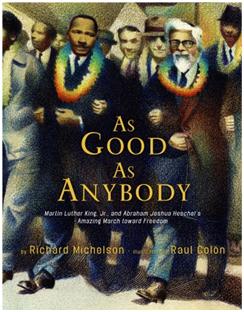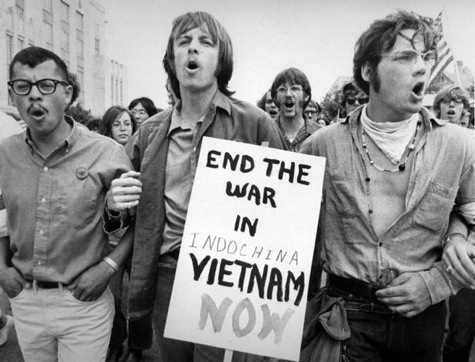 The Beatles, Beatlemania,
The Beatles, Beatlemania,
and the Music That Changed the World
by Bob Spitz (published October, 2007)
To understand our current culture, you must go back at least to the 1960’s (much more really, but without going back at least to the 60’s you have no hope of understanding). In order to understand the 1960’s, you must understand the Beatles.
Of course, there were lots of things going on. The demographics were revolutionary and explosive. The baby-boomers were marching en mass through puberty. The politics of the early 1960’s were both both contagious and ominous. The torch passed to a new generation and then dropped, hideously in the mud, as an assassin cut down the glamorous young president.
Into this weird witch’s brew of disillusioned idealism, VietNam, Civil Rights marches, and Johnson vs. Goldwater, exploded British rock ‘ roll – pioneered by the Beatles. Before the Beatles there was Frank Sinatra, Elvis Presley and Buddy Holley. After the Beatles… Its a bit like talking before and after The Flood.
Their first US tour began with their TV debut and introduction by Ed Sullivan on February 9 of 1964. They came back for a second set of concerts in the US in August of 1964 which were pure pandemonium.
Here is the very first song, from their very first appearance
on the Ed Sullivan Show – February 9, 1964
I Want to Hold Your Hand
[youtube=http://youtube.com/watch?v=ubkwVWH-Ia0]
My GOSH! They look so young! And they were.
John was 23, Paul 21, George 20 (two weeks shy of his 21st birthday), and Ringo 23.
Here is the very first song from the very first US concert:
Two days later, February 11, 1964 at the Washington Coliseum
I Saw Her Standing There
[youtube=http://youtube.com/watch?v=qGxR8SMrKFs]
The band had been together for about six years. It had been formed in twelve months between June of 1957 and June of 1958. John Lennon (born 1940, then aged 16) invited Paul McCartney to join his band, the Quarrymen. Paul was 15 (born in 1942). In March of 1958, Paul introduced his guitar wizard friend, George Harrison to John. John was 17 by then and Paul was 16. Because George was only 15 (born in 1943), John thought he was too young to join the band, but after a stunning display of talent on the guitar by George, John reluctantly agreed to let him join. John, Paul, & George were all guitarists. Paul was eventually to take up the bass, but remained comfortable and accomplished on both guitar and keyboards. The band went through a number of drummers before finally settling in with another Liverpool lad named Richard Starkey, aka Ringo (born 1942). They were kids, they were friends, and they were enormously talented.
They were deeply affected by American music which they managed to hear through two channels. The sailors and seaman of Liverpool brought back records from America – which they played over and over again at every neighborhood social gathering. And the kids spent hours in bedrooms and attics listening to the records, memorizing lyrics and trying to work out guitar chords. The second channel was a pirate radio station, breaking through the monopoly of the BBC. A shortwave English-language station known as Radio Luxembourg.
“Every Saturday and Sunday night in the late 1950’s, three of the boys who would later become the Beatles (George, the youngest was asleep by airtime) sat in their darkened bedrooms, tuning in to the station’s staticy signal as Radio Luxembourg’s deejays introduced the rock n roll records that were climbing the American charts. They were mesmerized by the music’s big aggressive beat and the tidal spill of lyrics. The effect it had on them was awesome. Sometimes the boys would furiously jot down lyrics to the songs; other times overcome by a thrilling piece of music, they would push their tablets away, lean back, close their eyes and let themselves be carried off by the voice and the melodies that would have a lasting influence on their lives.”
The Beatles released their first single (“Love Me Do”) in 1962. They did their last studio work together, seven years later in 1969 and then went their separate ways. But in those seven years, it is not an understatement to say that they changed the world. And not just the world of music.
Consider:
• They are the best-selling musical group of all time
• They had more number one singles than any other musical group (20 in the US)
• During the week of April 4, 1964 The Beatles held the top FIVE positions on the Billboard singles chart. No one had ever done anything like this before, and it is doubtful that anyone or any group will ever do it again. The songs were “Can’t Buy Me Love”, “Twist and Shout”, “She Loves You”, “I Want to Hold Your Hand”, and “Please Please Me”.
• The Beatles’ “Yesterday” is the most covered song in history, with over three thousand recorded versions. It is also the most played song in the history of international radio.
John Lennon and Paul McCartney are the most successful song-writing team of all time. They were both smart kids, witty, fond of word-play, and with similar tastes and a consuming commitment to music.
“Yeah, Yeah, Yeah – The Beatles, Beatlemania, and the Music That Changed the World” by Bob Spitz is a brilliant introduction to the phenomenon. He has a gift for describing the relationships between the four Beatles – and those around them, especially Brian Epstein (the classical music afficionado and record-store manager who took them under his wing) and George Martin, the record-company owner and studio producer who helped them create their sound.
Spitz’ biography is unvarnished. He deals matter-of-factly with the Beatles sampling of drugs in the late sixties and their 6-month dalliance with trancendental meditation and Maharishi Mahesh Yogi in 1967. He neither glorifies nor glamorizes – but objectively reports. I experienced a feeling of sadness that there was no one who could have constructively filled the spiritual void felt by these four young men.
The saddest sections of all in the book are the descriptions of John Lennon’s infatuation with the pop artist Yoko Ono and her insertion of herself into The Beatles’ studio time in 1969 – which led quickly to the break-up of the group.
This is a book that adults who want to understand the 1960s will find informative and thought-provoking. You young folk (grin) who came of age after 1970 may find that it helps you understand a great deal of the modern music scene. The text is pitched for a young adult audience. I expect high school students from fourteen and up would find it an enjoyable read. I’d recommend, if your students are interested in the 60s, that you read it together.
I can’t resist. Here’s another performance for the Ed Sullivan show, later in 1964.
George Martin, head of Parlophone Records (a division of EMI) and the producer for almost all of the Beatles’ recordings, leads off, recalling what he said to the lads when they finished recording this song
Please Please Me
[youtube=http://youtube.com/watch?v=qfzQyzZBd84]
He was right. It went #1 in both the UK and the US (30 weeks at #1 in the US!)
Listen to the harmonies on this!
This Boy
[youtube=http://www.youtube.com/watch?v=kMcGrcmXoZo]
And finally, Paul McCartney’s wistful ballad
Yesterday
[youtube=http://youtube.com/watch?v=l47brG6lC98]
You can buy Spitz’s book over at the Greenleaf Press website.
-Rob Shearer
Director, Schaeffer Study Center
Publisher, Greenleaf Press
 This is a remarkable, and hopeful children’s book about the struggle for civil rights in the 1960s. The book tells the story of two lives, in simple, clear text and powerful illustrations. The first biography is of a young black boy growing up in Atlanta. He is constantly confronted with painful reminders of the injustice and prejudice directed towards the members of his race. The second biography is of a young Jewish boy growing up in Poland. He too is constantly confronted with painful reminders of the injustice and prejudice directed towards the members of his race.
This is a remarkable, and hopeful children’s book about the struggle for civil rights in the 1960s. The book tells the story of two lives, in simple, clear text and powerful illustrations. The first biography is of a young black boy growing up in Atlanta. He is constantly confronted with painful reminders of the injustice and prejudice directed towards the members of his race. The second biography is of a young Jewish boy growing up in Poland. He too is constantly confronted with painful reminders of the injustice and prejudice directed towards the members of his race.
 This is a remarkable book. Just published in August of this year. It is a clear, frank, chilling depiction, – from Sis’s own childhood – of what life in Prague, Czechoslovakia was like. Children see, and notice, and understand the thousand of tiny details that make up daily life. And the tyranny of Communism in Eastern Europe was all about controlling the thousands of tiny details that make up daily life. Sis’s drawings are simple sketches, in drab black & white, punctuated by spots of shocking red that show the ubiquitous, intimidating presence of the oppressive state. Adults who did not personally experience the fear of tyranny (or who have never listened to someone who did) will find this a simple, but powerful introduction to what it really was like behind the Iron Curtain.
This is a remarkable book. Just published in August of this year. It is a clear, frank, chilling depiction, – from Sis’s own childhood – of what life in Prague, Czechoslovakia was like. Children see, and notice, and understand the thousand of tiny details that make up daily life. And the tyranny of Communism in Eastern Europe was all about controlling the thousands of tiny details that make up daily life. Sis’s drawings are simple sketches, in drab black & white, punctuated by spots of shocking red that show the ubiquitous, intimidating presence of the oppressive state. Adults who did not personally experience the fear of tyranny (or who have never listened to someone who did) will find this a simple, but powerful introduction to what it really was like behind the Iron Curtain.

